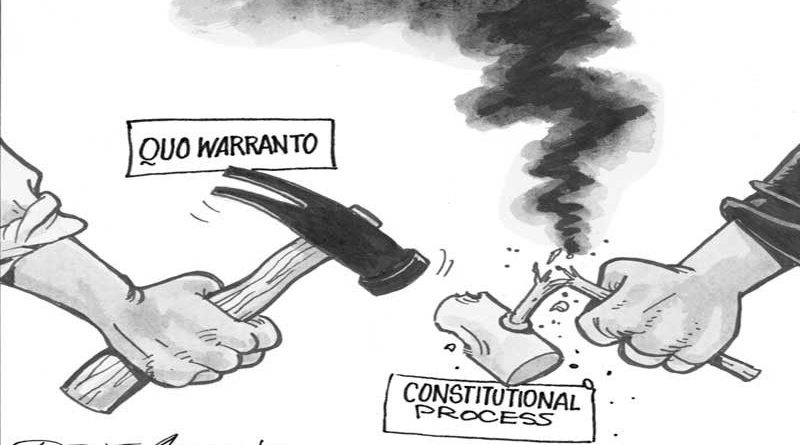OP-ED OPINION: FLEA MARKET OF IDEAS: ‘Is a perfect storm brewing?’ Column by Joel Ruiz Butuyan
 I was 500 kilometers away from Manila when the news broke that the Supreme Court had rendered a decision ousting its own head, Chief Justice Maria Lourdes Sereno. I had just attended three court hearings, and I was preparing to enjoy a quiet weekend in Cagayan Valley, my home region.
I was 500 kilometers away from Manila when the news broke that the Supreme Court had rendered a decision ousting its own head, Chief Justice Maria Lourdes Sereno. I had just attended three court hearings, and I was preparing to enjoy a quiet weekend in Cagayan Valley, my home region.News of the ouster flooded my Facebook feed with angry posts from friends. My absence from the capital city, where most of the outrage is expressed, afforded me with a vantage point that infused perspective, from a distance, to this controversy.
There have been four Supreme Court decisions that earned condemnation because of widespread belief that they weakened the foundations of our system of government.
ADVERTISEMENT
The first of these decisions resulted in giving validity to a void constitution. In 1973, while President Ferdinand Marcos ruled the Philippines under martial law, he issued a proclamation stating that the people had ratified a new constitution which made his dictatorial powers permanent.
The Marcos regime formed town assemblies, took pictures of people who were raising their hands while responding to the question of whether they wanted a free sack of rice, and the pictures were misrepresented as evidence that the people had approved the 1973 Constitution. When a case was filed questioning the proclamation, the Supreme Court gave validity to a constitution that was never ratified by the people.
The second of these decisions legitimated the removal of an elected president outside of the impeachment process. In 2001, there was a people power revolt (Edsa II) because the Senate, acting as an impeachment court trying then President Joseph Estrada, refused to open a sealed envelope widely suspected of containing proof of Estrada’s secret bank account with deposits of hundreds of millions of pesos. The revolt convinced both police and military forces to withdraw their support from Estrada.
Estrada left Malacañang without clearly saying that he was resigning. The Supreme Court engaged in legal contortions when it ruled that Estrada had “constructively resigned” based on an interpretation of his words and actions, and an analysis of the
diary of one of his officials.
The third of these decisions validated the appointment of a chief justice despite its clear nullity under the Constitution. Two days after the 2010 presidential election and a month before her term was to expire, President Gloria Macapagal Arroyo appointed Renato Corona as chief justice. The appointment violated the literal prohibition in the Constitution which does not allow appointments three months before a presidential election and up to the end of the incumbent president’s term. The Supreme Court created a virtual exception by declaring that the prohibition does not apply to appointments in the high court.
Now comes this fourth decision which, just like in the Estrada case, removed another impeachable official—Sereno—by judicial action. I had previously criticized the resort to quo warranto, and argued that the impeachment route should be followed. But beyond legalities, there are thorny issues that should have made the justices leave matters to the impeachment process, like the animosity toward Sereno because of her character and personality which gravely infuriate her colleagues, and the rancor over the ouster of then Chief Justice Corona, to mention a few.
Is another people power protest in the offing? No, if the question is based on the Sereno ouster alone. The anger generated is largely confined to the middle and upper classes, similar to the Corona appointment.
But the rage engendered among the rich converges with the seething resentment of the poor over the rising prices caused by the TRAIN Law, the military’s simmering anger over the administration’s blind obeisance to China, the bitterness over thousands of extrajudicial killings, the betrayal engendered by corruption revelations, the fury created by the closure of Boracay, and the gloom caused by the Kuwait fiasco.
There may be a perfect storm brewing on the horizon.
Comments to [email protected] / The Philippine Daily Inquirer









